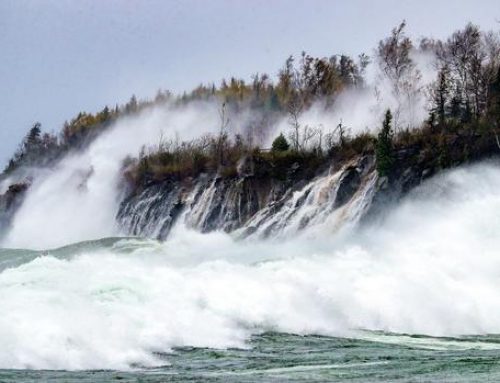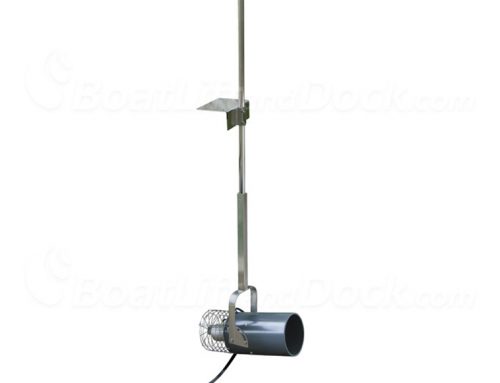With the record shattering snow fall this winter many around the country are wondering what will happen to lake levels when this blizzard begins to thaw. We will certainly see some water levels increase and this has many wondering how it will affect the upcoming boating season. Another point to consider is the long-term affect this melt-off will have. The sheer amount of snow melt will not only raise water levels but it will cool the lakes and rivers, decreasing the amount of seasonal evaporation, further altering the conditions for boaters and sportsman.
 These realities, which will soon manifest will mean delays or adjustment to many private and public waterfronts, requiring free-standing dock level adjustment and perhaps delays in installation of personal watercraft equipment such as freestanding and floating lifts. The spring thaw will bring the breakup of the ice pack, promoting flooding and also clogging regional waterways. These conditions will likely delay many regional dock and lift installations without artificial assistance in the form of deicer machines.
These realities, which will soon manifest will mean delays or adjustment to many private and public waterfronts, requiring free-standing dock level adjustment and perhaps delays in installation of personal watercraft equipment such as freestanding and floating lifts. The spring thaw will bring the breakup of the ice pack, promoting flooding and also clogging regional waterways. These conditions will likely delay many regional dock and lift installations without artificial assistance in the form of deicer machines.
The main adjustments that will likely need to be made will be either and increase in the height of existing dock supports or extending the length of your dock system, floating or free-standing. Lift heights may need to be adjusted as well, which for pontoon owners, will be a nice change from the low water conditions that they have dealt with over the last few seasons.
According to forecast models run by the Army Corp of Engineers, in the Lake Michigan and Huron regions, water levels could rise an additional 13.5 inches. Other predictors, such as those maintained by the National Oceanic and Atmospheric Administration (NOAA) and the Great Lakes Environmental Laboratory’s water level portal, indicate that we could see as much as a 17 inch rise in the same areas.[i]
 Another factor that will likely play into the amount of melting snow finding its way into the lakes is the degree to which the ground is frozen. The cold temperatures this past winter may affect the frost depth and therefore prevent a lot of runoff from penetrating the ground, allowing it to find its way into lakes, rivers, and low lying areas. This will impact water levels and promote flooding in certain areas.
Another factor that will likely play into the amount of melting snow finding its way into the lakes is the degree to which the ground is frozen. The cold temperatures this past winter may affect the frost depth and therefore prevent a lot of runoff from penetrating the ground, allowing it to find its way into lakes, rivers, and low lying areas. This will impact water levels and promote flooding in certain areas.
The cold temperatures and ice cover on the Great Lakes could extend the regional discomfort well into spring. With ice cover on the lakes above 90%, we are likely to experience a significant extension of colder temps in the coming months. The winds moving over the ice on the lakes will produce a much cooler spring than we are used to and delay the beginning of the season for many in the region.
With all of the coming changes to conditions on the Great Lakes, we will be returning to this topic throughout the year. Stay tuned for further developments.
[i] Andrew D. Gronewold, Anne H. Clites, Joseph P. Smith, Timothy S. Hunter, A dynamic graphical interface for visualizing projected, measured, and reconstructed surface water elevations on the earths largest lakes, Environmental Modelling & Software, Volume 49, November 2013. Pages 34-39, http://dx.doi.org/10.1016/j.envsoft.2013.07.003






